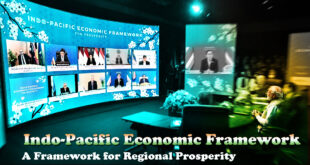
Introduction
The Remission of Duties or Taxes on Exported Products (RoDTEP) scheme is a key government initiative aimed at enhancing the competitiveness of Indian exports in the global market.
Objectives of the RoDTEP Scheme
The RoDTEP scheme was introduced in January 2021, replacing the Merchandise Exports from India Scheme (MEIS). It has the following primary objectives:
Refund Embedded Taxes: The scheme aims to refund various central, state, and local level taxes (duties, levies) embedded in the cost of exported products. These are indirect taxes that are not directly paid by exporters but are included in the cost of raw materials, utilities, and other inputs used in production.
Level Playing Field: By refunding embedded taxes, RoDTEP helps Indian exporters compete on a level playing field with their foreign counterparts who may not face similar tax burdens.
Boost Export Competitiveness: Refunding these embedded taxes reduces the overall cost of production for exporters, making Indian exports more price-competitive in the international market.
Promote Diversification: The scheme encourages the export of a wider range of products, potentially leading to diversification of India’s export basket and reducing dependence on a few key export sectors.
Job Creation: Increased exports can lead to increased production, potentially creating new jobs in various sectors.
These objectives highlight the RoDTEP scheme’s role in promoting export growth and strengthening India’s position in the global trade arena.
Challenges in Implementation
Despite its laudable goals, the RoDTEP scheme faces some challenges:
Complexity of Calculations: Determining the exact amount of embedded taxes for refund can be complex, requiring robust procedures and clear guidelines.
Administrative Burden: The scheme’s implementation involves additional paperwork and administrative processes for both exporters and government agencies.
Coverage and Rates: The scheme may not cover all embedded taxes or may offer varying rates of refund for different products, potentially leading to concerns about fairness and effectiveness.
Potential for Misuse: There’s a risk of fraudulent claims or misuse of the scheme, necessitating strong monitoring and verification mechanisms.
Budgetary Constraints: The scheme’s success depends on the government’s ability to allocate sufficient budgetary resources to meet the refund claims of exporters.
Addressing these challenges is crucial for the smooth and effective implementation of the RoDTEP scheme.
Provisions of the RoDTEP Scheme
The RoDTEP scheme offers the following provisions to exporters:
Refundable Taxes: The scheme reimburses various central, state, and local level indirect taxes embedded in the cost of exported products. These may include taxes like Value Added Tax (VAT), Central Goods and Services Tax (CGST), State Goods and Services Tax (SGST), excise duty, custom duty on imported inputs used in export production, etc. (specific taxes covered and rates may vary).
Transferable Duty Credit Scrips (e-Scrips): Refunds are issued in the form of transferable electronic duty credit scrips (e-scrips). These scrips can be used for payment of various customs and excise duties on import of inputs required for further production of export goods. Alternatively, they can be traded electronically on designated platforms.
Phased Implementation: The scheme is being implemented in phases. While operational since January 2021, the government may extend coverage to new sectors or revise refund rates periodically.
These provisions offer exporters greater flexibility and potentially improve the ease of doing business under the scheme.
To ensure the success of the RoDTEP scheme, several measures can be taken:
Streamlining Procedures: Simplifying claim processes and leveraging technology can reduce the administrative burden for both exporters and government agencies.
Transparency and Clarity: Clear and comprehensive guidelines on eligible taxes, calculation methods, and refund rates are essential for transparency and ease of implementation.
Robust Monitoring: Strong monitoring mechanisms are needed to prevent misuse and ensure the scheme’s integrity.
Regular Review and Adjustments: The scheme’s effectiveness needs to be periodically reviewed, and adjustments made to address emerging challenges and ensure its continued relevance.
Promoting Awareness: Raising awareness about the scheme among potential beneficiaries, particularly small and medium-sized enterprises (SMEs), is crucial for maximizing its impact.
By implementing these suggestions, the government can create a robust and efficient RoDTEP scheme that effectively supports Indian exporters and propels export growth.
The Remission of Duties or Taxes on Exported Products scheme is a significant policy initiative with the potential to enhance India’s export competitiveness. By addressing the challenges,
 Chinmaya IAS Academy – Current Affairs Chinmaya IAS Academy – Current Affairs
Chinmaya IAS Academy – Current Affairs Chinmaya IAS Academy – Current Affairs
